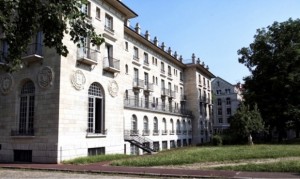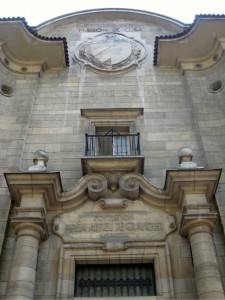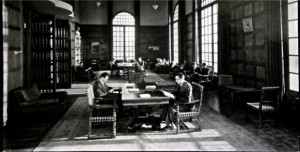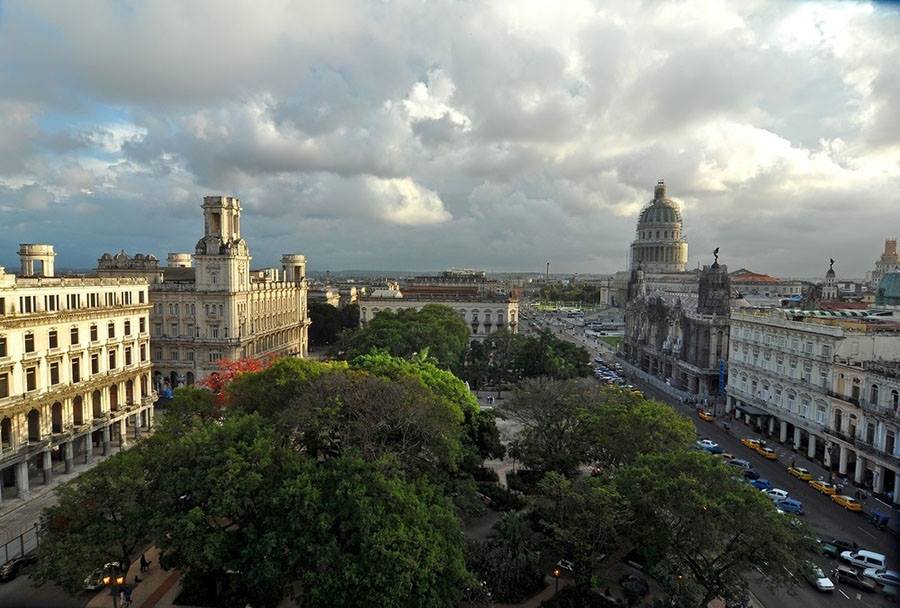HISTORIA DE LA “CASA CUBA” DE PARIS.
En 1919, recién finalizada la Primera Guerra Mundial, surgió la idea de crear en París una ciudad universitaria que acogiera a estudiantes del mundo entero. Un grupo de intelectuales y políticos visionarios se propuso promover el proyecto y en 1925 fue inaugurada la primera residencia. Además de mejorar las condiciones de alojamiento estudiantil, la Fundación Nacional que promovió la iniciativa quiso crear un modelo original de colectividad acorde al contexto pacifista y humanista de la época.
Fue entonces cuando Pierre Sánchez Abreu (1890-1952), un acaudalado abogado asentado en Francia, descendiente de una ilustre familia de la Cuba colonial, decidió construir una casa para los estudiantes cubanos en la Ciudad Luz. Para ello contó con el apoyo de su hermana Rosalía, más conocida como Lilita (1886-1955). Ambos deseaban crear una fundación en homenaje a su tía, Rosa Abreu Arencibia, viuda del profesor Jacques-Joseph Grancher. Este último había sido un gran amigo y colaborador de Louis Pasteur, en particular durante los estudios que el científico francés dedicó a la vacuna antirrábica.
Los hermanos Sánchez Abreu quisieron perpetuar la tradición filantrópica de Rosa Abreu, quien ayudaba ampliamente a los estudiantes cubanos de paso por París y había financiado también en su ciudad natal de Santa Clara múltiples obras caritativas y de beneficencia desde los años de 1870.
La Fundación Abreu de Grancher.
El 25 de febrero de 1929 Pierre Sánchez Abreu y su hermana firmaron el acta de donación, que fue aprobada por decreto el 26 de mayo. El documento, conservado en los archivos de la Cité Universitaire, otorgaba a los donantes un terreno de 1.824 m², y los mismos se comprometían a “edificar y amueblar en el recinto de la Ciudad Universitaria, un inmueble que permita a los estudiantes cubanos el beneficio y las ventajas de dicha Ciudad… destinado a convertirse tras su construcción, en propiedad de la Universidad de París”. Esos archivos conservan una abundante documentación que refleja en múltiples aspectos la historia de Cuba o acontecimientos internacionales como la ocupación de París durante la Segunda Guerra Mundial.
El reglamento de la fundación estipulaba como nombre oficial “Université de Paris Fondation Rosa Abreu de Grancher, en faveur des étudiants cubains” (Universidad de París Fundación Rosa Abreu de Grancher, a beneficio de los estudiantes cubanos).
Los donadores decidieron encargar la construcción de la Casa de Cuba al arquitecto francés Albert Laprade (1883-1978), quien comenzaba a distinguirse como uno de los más célebres exponentes del estilo art decó. El 3 de abril de 1930 el rector de la Universidad de París recibió la autorización de construir la residencia por parte de las autoridades locales. Apenas dos años después la institución asumía plenamente sus funciones, aunque la inauguración oficial tuvo lugar el 14 de enero de 1933.
A mediados del pasado siglo la Casa de Cuba en París acogió a gran parte de la elite cultural cubana. Entre otros residentes destacan los artistas Ángel Acosta León, Ramón Alejandro, Agustín Cárdenas, Joaquín Ferrer, Roberto García-York, Gina Pellón y Loló Soldevilla, el cineasta Néstor Almendros, o los intelectuales Rine Leal y Severo Sarduy.
La casa más lujosa de la Ciudad Universitaria
Desde su apertura, la Casa de Cuba fue considerada como una de las más lujosas, y sobre todo la de mayor confort. La estructura general emplea el hormigón armado como técnica constructiva, pero las fachadas están recubiertas de piedra dura de Saint-Maximin, Vergelé de Saint-Wast y roca de Comblanchien. Estos materiales evocan la piedra de cantería característica de la arquitectura señorial cubana del periodo colonial.
En la fachada principal, inspirada en la de la Catedral de La Habana, destaca la entrada monumental enmarcada por elegantes columnas. Su parte superior central ostenta el escudo de la República de Cuba en relieve sobre una cornisa semicircular y, dispuestos de forma simétrica, sobresalen dos antecuerpos con medallones esculpidos en piedra de Euville representando las armas de las seis antiguas provincias.
El vestíbulo comunica con una galería central que atraviesa la planta baja y conduce al gran salón o sala de reuniones, que también sirve de biblioteca. Este espacio, de 124 m² se abre al jardín por cinco grandes ventanales de medio punto. Las paredes y estanterías de la biblioteca están recubiertas de caoba cubana, así como el portón de entrada al salón, ornado de elegantes celosías. El revestimiento de maderas constituye una de las obras maestras del edificio, ejecutada por el ebanista Eugène Printz (1889-1948), gran maestro del art decó francés y colaborador asiduo del arquitecto Laprade.
El mobiliario del salón, que actualmente se conserva en su gran mayoría, fue importado de La Habana. Algunas de las mesas y butacas preservan la placa metálica que identifica al fabricante: “Casa Cayón. Neptuno 186 Tél.A.4288. Habana-Cuba”.
Por su parte, los muebles de las habitaciones fueron diseñados por el propio arquitecto Laprade en un sobrio estilo neocolonial, y fabricados por Mercier Frères, histórica firma parisina fundada a principios del siglo XIX, cuyos talleres definitivamente en el año 2006. También se conserva actualmente gran parte de este mobiliario.
Otro elemento arquitectónico que merece la pena mencionar es el hueco octogonal de la escalera que comunica los cinco niveles de elevación del edificio. Es aquí donde el arquitecto Laprade desarrolla su máxima creatividad, combinando en perfecto equilibrio la geometría característica del art decó de los años 30 con el espíritu vernacular de la residencia.
Un aspecto de la casa destacado por la mayor parte de artículos de prensa y otros documentos de archivo es el hecho de poseer en cada una de las setenta habitaciones, cuartos de baño individuales con agua fría y caliente las 24 horas, además de teléfono y reloj eléctrico. La residencia contó desde su apertura con ascensor y múltiples comodidades como cocina, servicio de lavandería y de desayuno y merienda. Ningún detalle fue descuidado. Los inventarios evocan la existencia de perchas identificadas con el nombre de la fundación, cubiertos de plata ornados con el escudo de la República de Cuba realizados por la casa de orfebrería parisina Christofle, cristalería fina y una vajilla de porcelana de Limoges, que si bien no se describe en la documentación, estaba igualmente ornada con el escudo cubano, según fuentes testimoniales. Actualmente no se conserva ninguno de estos accesorios.
El ocaso de la Fundación Abreu Grancher
Un estudio de los fondos documentales de la Fundación Abreu Grancher muestra el progresivo deterioro del edificio a lo largo del siglo XX, a pesar de algunas restauraciones parciales, y la paulatina desaparición de gran parte de su patrimonio mobiliario. La Casa de Cuba fue objeto de vandalismo durante la dramática ocupación de París entre 1940 y 1944. El edificio fue uno de los primeros ocupados por los militares alemanes y seguidamente por las tropas norteamericanas durante los primeros meses de la liberación.
Pierre Sánchez Abreu falleció en La Habana el 21 de febrero de 1952 y su hijo Jean-Claude Abreu (1922-2006) ocupó su lugar en el Consejo de Administración de la Fundación Cubana en 1955. A partir de 1959, los embajadores cubanos Harold Gramatges y Alejo Carpentier trataron infructuosamente de modificar los estatutos de la institución con el objetivo de controlar completamente su dirección. Sin embargo, en agosto de 1975 la Universidad de París, después de años de litigio, decidió asimilar la Casa de Cuba y adjudicarse definitivamente su tutela. Hoy en día solo el nombre y lo que queda de su patrimonio original hacen honor a sus generosos fundadores y a nuestra cultura nacional.
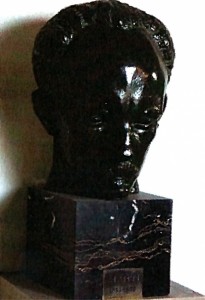 (EL DESAPARECIDO BUSTO DE JOSE MARTI)
(EL DESAPARECIDO BUSTO DE JOSE MARTI)
Una particularidad de la Casa de Cuba desde sus inicios fue la voluntad de sus fundadores de crear un fondo bibliográfico cubano y una colección de obras de arte, documentos y objetos históricos de los que muy pocos subsisten hoy. Previo a las obras de restauración, en abril de 2009 el Servicio de Patrimonio de la Cité Universitaire llevó a cabo un inventario. El documento señala la presencia en el vestíbulo de un busto de José Martí, obra del célebre escultor cubano Juan José Sicre. El interés del busto reside en haber sido donado a la Universidad de París por el hijo del Apóstol, José Francisco Martí Zayas Bazán, según consta en documentos de archivo de 1933. Al mismo tiempo, la escultura forma parte de una serie encargada en 1926 por su autor a los talleres de fundición Valsuani, instalados en París en 1899. Esta empresa, que ha mantenido sus funciones hasta la actualidad, es conocida por su calidad técnica y ha colaborado con artistas de la talla de Picasso, Matisse, Degas o Gauguin.
Cuando Sicre realizó el busto de Martí, sus obras integraban el inicio de la vanguardia artística cubana. El escultor colaboraba con la revista de avance, uno de los puntos de partida del modernismo en Cuba y comenzaba su labor pedagógica en la Academia de San Alejandro de La Habana, después de perfeccionarse en Europa, y particularmente en París, donde fue discípulo de Antoine Bourdelle. Este busto marca el inicio de sus búsquedas para el colosal monumento de la Plaza Cívica (hoy llamada Plaza de la Revolución), uno de los símbolos de la nación cubana, inaugurado en 1958. Varios ejemplares de esta serie figuran en conocidas instituciones del mundo entero y otros pueden ser adquiridos en el mercado del arte, lo que dificultaría una posible localización.
Al mismo tiempo que renace el edificio de la Casa de Cuba en la ciudad universitaria parisina tras una ejemplar restauración y como una metáfora de la convulsa historia de la Casa de Cuba en la Ciudad Universitaria de París, el busto de nuestro Héroe Nacional desapareció durante las recientes obras de restauración arquitectónica, siendo remplazado por el del sabio francés Louis Pasteur, obra de Paul Dubois realizada en 1888, procedente también de la colección original. Así, la efigie que fue donada para representar “el esfuerzo de los cubanos por su independencia”, como señala el documento de su donación, ha dejado de velar el umbral de este pedazo de Cuba en París.
DDC/Enrique José Varona/ Excerpts/InternetPhotos/www.thecubanhistory.com
THE ” CASA CUBA” de Paris History.
The Cuban History, Hollywood.
Arnoldo Varona, Editor
THE ” CASA CUBA” de Paris History.
In 1919 , recently concluded World War , came the idea of creating a college town in Paris which accommodated students from around the world. A group of intellectuals and political visionaries sought to promote the project and in 1925 opened the first residence . In addition to improving the conditions of student housing , the National Foundation promoted the initiative wanted to create an original model of community according to pacifist and humanist context of the time .
It was then that Pierre Sanchez Abreu (1890-1952) , a wealthy lawyer based in France , a descendant of an illustrious family in colonial Cuba , decided to build a house for Cuban students in the City of Light . To do this he had the support of his sister Rosalie , better known as Lilith ( 1886-1955 ) . Both wanted to create a foundation in honor of her aunt , Rosa Abreu Arencibia, widow of Professor Jacques -Joseph Grancher . The latter had been a great friend and collaborator of Louis Pasteur, in particular during the French scientific studies devoted to the rabies vaccine .
The Sanchez brothers Abreu wanted to perpetuate the philanthropic tradition of Rosa Abreu , who largely helped Cuban students passing through Paris and had also financed his hometown of Santa Clara multiple charities and charitable since the 1870s .
The Abreu Grancher Foundation .
The February 25, 1929 Pierre Sanchez Abreu and his sister signed the deed of gift , which was approved by decree on 26 May . The document , preserved in the archives of the Cité Universitaire , donors gave a plot of 1,824 m², and pledged themselves to ” build and furnish on the site of University City, a property that allows Cuban students benefit and benefits of this City … destined to become after its construction, the property of the University of Paris . ” These archives contain extensive documentation reflecting in many ways the history of Cuba or international events such as the occupation of Paris during World War II.
The regulation stipulated the foundation as the official name “Université de Paris Fondation Rosa Abreu Grancher in faveur des étudiants cubains ” ( University of Paris Rosa Abreu Grancher Foundation , to benefit the Cuban students ) .
Donors agreed to entrust the building of the house of Cuba to the French architect Albert Laprade (1883-1978) , who began to distinguish himself as one of the most famous exponents of the art deco style . On April 3, 1930 the rector of the University of Paris received authorization to construct the residence by the local authorities. Just two years after the institution fully assumed his duties, although the official opening took place on January 14, 1933 .
A mid-century house in Paris Cuba welcomed much of Cuba’s cultural elite. Other residents include artists Angel Acosta León , Ramon Alejandro Agustín Cárdenas , Joaquín Ferrer, Roberto Garcia – York , Gina Pellon and Lolo Soldevilla , cinematographer Nestor Almendros, or intellectuals and Sarduy Rine Leal .
The most luxurious house in the University City
Since opening , the House of Cuba was considered one of the most luxurious , and most especially the comfort. The general structure used as reinforced concrete construction technique , but the facades are covered with hard stone of Saint -Maximin, Saint- Wast Vergelé and rock Comblanchien . These materials evoke the characteristic stone quarrying Cuban stately architecture of the colonial period .
On the main facade , inspired by the Cathedral of Havana stands the monumental entrance framed by elegant columns. Your top center shows the shield of the Republic of Cuba on a raised semicircular cornice and arranged symmetrically with two outstanding forehearths carved stone medallions representing the Arms Euville six ancient provinces .
The lobby communicates with a central gallery that runs through the ground floor and leads to the great hall or meeting room , which also serves as a library . This space , 124 m² garden opens five large semicircular windows . The walls and shelves are lined library Cuban mahogany , and the entrance gate to the hall, elegant ornate latticework . The wood siding is one of the masterpieces of the building, executed by cabinetmaker Eugène Printz (1889-1948) , grand master of French art deco architect and regular contributor Laprade .
The furniture in the lounge, which is now preserved mostly , was imported from Havana. Some of the tables and chairs preserve the metal plate that identifies the manufacturer : ” House Neptune 186 Cayon Tél.A.4288 Havana- Cuba . . .”
For its part, the furniture of the rooms were designed by architect Laprade himself in a sober neoclassical style , and manufactured by Mercier Frères , historic Parisian brand founded in the early nineteenth century , which definitely workshops in 2006 . Currently is conserved much of this furniture.
Another architectural feature worth mentioning is the octagonal stairwell that connects the five levels of the building elevation . This is where the architect Laprade develops maximum creativity , combining perfectly balanced geometry feature Art Deco of the 30s to the vernacular spirit of residence.
One aspect highlighted by the majority of newspaper articles and other archival documents home is the ownership in each of the seventy rooms , individual bathrooms with hot and cold water 24 hours , plus telephone and alarm electric . The residence had since opening with lift and multiple amenities such as kitchen, laundry and breakfast and snack. No detail was overlooked . Inventories evoke the existence of hangers identified with the name of the foundation, covered with ornate silver shield of the Republic of Cuba made by Parisian silversmith Christofle house , fine glassware and china from Limoges, while not described in the documentation, was also adorned with the Cuban coat as testimonial sources . Currently none of these accessories is preserved.
Twilight of the Grancher Abreu Foundation
A study of the documentary Foundation Grancher Abreu shows progressive deterioration of the building throughout the twentieth century, despite some partial restorations , and the gradual disappearance of much of its furniture heritage. La Casa de Cuba was vandalized during the dramatic occupation of Paris between 1940 and 1944. The building was one of the first occupied by the German military and then by U.S. troops during the first months of release.
Pierre Sanchez Abreu died in Havana on February 21, 1952 and his son Jean -Claude Abreu ( 1922-2006 ) took his place on the Board of Directors of the Cuban Foundation in 1955. Since 1959 , Cuban ambassadors Harold Gramatges Alejo Carpentier and tried unsuccessfully to amend the statutes of the institution in order to fully control its direction . However, in August 1975 the University of Paris, after years of litigation, the House decided to assimilate Cuba and finally win his tutelage. Today only the name and what remains of its original heritage honor their generous founders and our national culture.
A peculiarity of the House of Cuba from its inception was the will of its founders to a Cuban library collection and a collection of works of art , historical documents and objects that few remain today. Prior to the restoration , in April 2009, the Heritage Service of the Cité Universitaire conducted an inventory. The document notes the presence in the lobby of a bust of José Martí , by the famous Cuban sculptor Juan José Sicre . The interest lies in the bust have been donated to the University of Paris by the son of the Apostle José Martí Francisco Zayas Bazán, according to documents on file 1933. Meanwhile, the sculpture is part of a series commissioned in 1926 by its author foundries Valsuani installed in Paris in 1899. This company , which has held office until today , is known for its technical quality and has collaborated with artists such as Picasso , Matisse , Degas and Gauguin .
When Sicre made the bust of Marti, his works were part of the beginning of the Cuban artistic vanguard . The sculptor worked with the magazine forward , one of the starting points of modernism in Cuba and began his teaching work at the Academy of San Alejandro in Havana , after further training in Europe, and particularly in Paris, where he was a pupil of Antoine Bourdelle . This bust marks the beginning of their search for the colossal monument of the Civic Plaza ( now called Revolution Square ) , one of the symbols of the Cuban nation , opened in 1958. Several copies of this series contained in known institutions worldwide and others may be purchased at the art market , deterring a possible location .
Rises While the building of the house of Cuba in the Paris campus after an exemplary restoration and as a metaphor for the turbulent history of the house of Cuba in the University City of Paris, the bust of our national hero disappeared during recent works of architectural restoration , being replaced by the French scientist Louis Pasteur , the work of Paul Dubois conducted in 1888 , also from the original collection . Thus, the effigy was donated to represent ” the efforts of the Cubans for independence ” , as the document of your donation , no longer ensure the threshold of this piece of Cuba in Paris .
DDC / Enrique José Varona / Excerpts / InternetPhotos / www.thecubanhistory.com
THE “CASA CUBA ” History of Paris .
The Cuban History , Hollywood.
Arnoldo Varona , Editor



